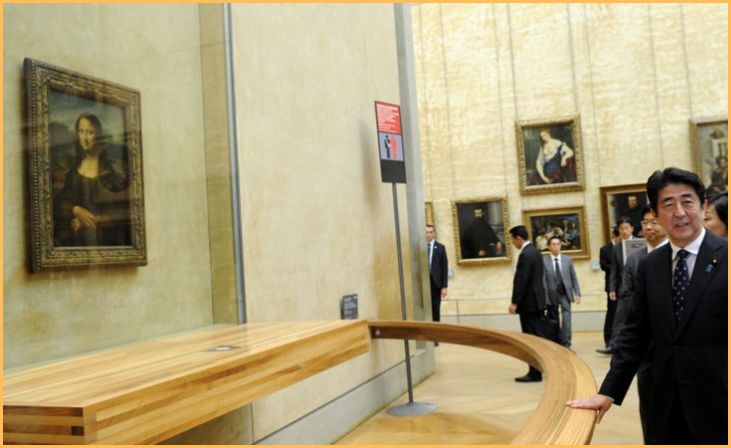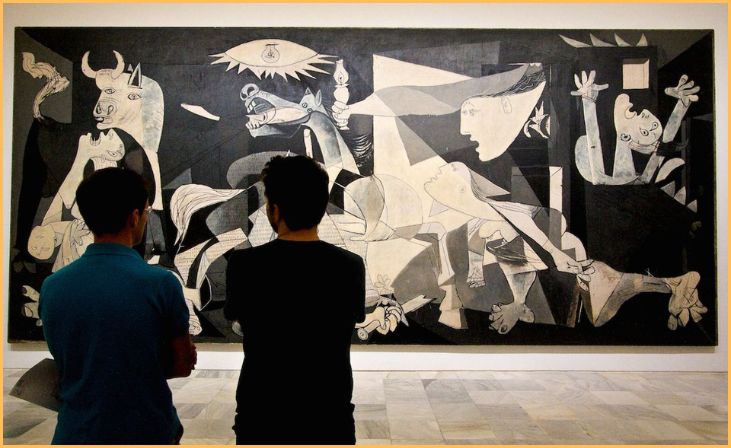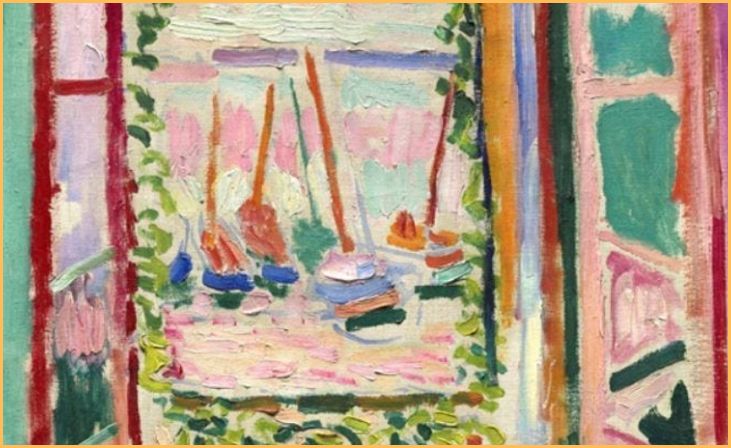Art holds a transcendent power, encapsulating the essence of culture, history, and human emotion. Within this vast realm, certain paintings have attained iconic status, becoming touchstones in the collective consciousness of society.
These masterpieces not only showcase exceptional skill but also serve as mirrors reflecting the aspirations, struggles, and innovations of their respective times. In this exploration of the most famous paintings in the world, we delve into the strokes of genius that have left an indelible mark on the art world.
From the enigmatic smile of the Mona Lisa to the swirling brilliance of The Starry Night, each canvas is a portal inviting us to connect with the artists’ visions, transcend boundaries, and appreciate the enduring impact of visual storytelling throughout history.
Importance of art in culture and history
Art holds profound significance in culture and history, acting as a mirror that reflects and shapes societal values, beliefs, and aspirations. Its importance can be elucidated through various dimensions:
- Cultural Identity: Art serves as a repository of cultural identity, encapsulating the unique stories, traditions, and aesthetics of different societies. It becomes a visual language that communicates the essence of a culture across generations.
- Expression of Human Experience: Artists capture the human experience, expressing emotions, struggles, triumphs, and the nuances of daily life. Art becomes a vehicle for empathy, allowing individuals to connect with shared experiences across time and space.
- Social Commentary: Throughout history, artists have used their work as a means of social and political commentary. Art can challenge norms, critique injustice, and provide a platform for marginalized voices, fostering dialogue and societal reflection.
- Historical Documentation: Art serves as a historical record, preserving visual representations of significant events, people, and societal changes. Paintings, sculptures, and other artistic expressions provide insights into the past, offering a unique perspective beyond written records.
- Catalyst for Innovation: Art often pushes boundaries and challenges conventional thinking. It serves as a crucible for innovation, inspiring new ideas and influencing other fields, including science, philosophy, and technology.
- Aesthetic Appreciation: Beyond its utilitarian and symbolic roles, art contributes to the beauty and aesthetics of daily life. It enhances our surroundings, invoking contemplation, inspiration, and a sense of wonder.
- Educational Tool: Art can be a powerful educational tool, fostering creativity and critical thinking. Studying art history provides insights into the evolution of societies, technological advancements, and shifts in cultural paradigms.
Also, Read – Most Popular Websites in the World
Most Famous Paintings in the World
Mona Lisa by Leonardo da Vinci (c. 1503-1506)

Painted by Leonardo da Vinci between 1503 and 1506, the Mona Lisa is housed in the Louvre Museum in Paris, France. This iconic portrait features a woman with an enigmatic smile, captivating viewers with her mysterious allure.
Da Vinci masterfully employed sfumato, a technique that creates a soft and blurred effect, contributing to the painting’s timeless and captivating quality. The subject’s gaze, coupled with the subtle play of light and shadow, adds depth to the Mona Lisa’s enigmatic expression.
Widely considered one of the most famous and valuable paintings in the world, the Mona Lisa continues to be a symbol of artistic brilliance and intrigue.
Starry Night by Vincent van Gogh (1889)
Painted in 1889 by Vincent van Gogh, “Starry Night” is a mesmerizing masterpiece housed in the Museum of Modern Art (MoMA) in New York. This iconic work showcases swirling, expressive brushstrokes that depict a turbulent night sky over a tranquil village.
Van Gogh’s use of vibrant blues and yellows creates a dynamic and emotional atmosphere, conveying a sense of cosmic energy. The cypress tree in the foreground and the village below add to the dreamlike quality of the scene.
“Starry Night” is a testament to van Gogh’s unique artistic vision and his ability to translate profound emotion onto canvas, making it one of the most celebrated paintings in art history.
The Persistence of Memory by Salvador Dalí (1931)
Created in 1931 by Salvador Dalí, “The Persistence of Memory” is a surrealist masterpiece housed in the Museum of Modern Art (MoMA) in New York. The painting is renowned for its melting clocks draped over various objects in a dreamlike landscape.
Dalí’s exploration of time and space, combined with meticulous detail and illusionistic precision, creates a disconcerting and thought-provoking atmosphere.
The soft, almost liquid appearance of the clocks contrasts with the stark and desolate background, inviting viewers to contemplate the fluidity and subjectivity of time. Dalí’s work remains an enduring symbol of the surrealism movement and a profound exploration of the nature of reality.
The Scream by Edvard Munch (1893)
Painted in 1893 by Edvard Munch, “The Scream” is an iconic masterpiece housed in various locations, including the National Gallery in Oslo, Norway. This expressionist work features a figure on a bridge, the landscape distorted with swirling colors and a tumultuous sky.
The central figure, with a contorted face and hands on the sides of its head, symbolizes the anxiety and existential dread experienced by humanity.
Munch’s use of bold colors and intense, swirling lines conveys a sense of inner turmoil and the overwhelming emotional impact of the modern world. “The Scream” is a haunting and enduring representation of the human experience in the face of existential angst.
Guernica by Pablo Picasso (1937)

Painted by Pablo Picasso in 1937, “Guernica” is a powerful anti-war mural housed in the Museo Reina Sofia, Madrid, Spain. Picasso created this monumental work in response to the bombing of the town of Guernica during the Spanish Civil War.
The monochromatic painting depicts anguished and distorted figures, animals, and buildings, conveying the horror and suffering caused by war. The fragmented and chaotic composition, with stark contrasts of light and shadow, heightens the emotional impact.
“Guernica” stands as a timeless symbol of the consequences of violence and remains a poignant expression of the artist’s political and humanitarian convictions.
Also, Read – Zodiac Signs for Thriving in Dance Cardio
The Last Supper by Leonardo da Vinci (1495-1498)
Executed between 1495 and 1498 by Leonardo da Vinci, “The Last Supper” is a masterpiece located in the Convent of Santa Maria delle Grazie, Milan, Italy. This iconic mural captures the moment of Jesus’ revelation that one of his disciples would betray him.
The composition skillfully portrays the emotional reactions of the disciples, emphasizing their individual personalities and responses to the shocking announcement.
Da Vinci’s meticulous attention to detail, innovative use of perspective, and the subtle play of light contribute to the enduring significance of “The Last Supper” as one of the most revered and influential works in the history of Western art.
The Girl with a Pearl Earring by Johannes Vermeer (c. 1665)
Painted around 1665 by Johannes Vermeer, “The Girl with a Pearl Earring” is a captivating masterpiece displayed in the Mauritshuis, The Hague, Netherlands. This enigmatic portrait features a young woman with a turban and a luminous pearl earring, her gaze and expression exuding timeless mystery.
Vermeer’s use of light and shadow, combined with meticulous attention to detail, creates a sense of intimacy and depth. The exquisite rendering of the pearl, with its play of light and reflection, adds to the painting’s allure. “The Girl with a Pearl Earring” is celebrated for its transcendent beauty and Vermeer’s masterful handling of light and composition.
Water Lilies series by Claude Monet (1897-1926)
Created by Claude Monet between 1897 and 1926, the “Water Lilies” series is a defining body of work displayed in various museums, including the Musée de l’Orangerie, Paris, France.
Comprising numerous paintings, Monet’s series explores the ever-changing reflections and atmospheric conditions of his water garden in Giverny. The artist’s use of bold brushstrokes and a vibrant palette captures the serene beauty of the pond’s floating water lilies, surrounded by lush vegetation and the play of light on the water’s surface.
This series represents a pivotal moment in the development of Impressionism, showcasing Monet’s fascination with nature and his innovative approach to depicting its transient qualities.
The Birth of Venus by Sandro Botticelli (c. 1484-1486)
Crafted by Sandro Botticelli between 1484 and 1486, “The Birth of Venus” is a seminal work housed in the Uffizi Gallery, Florence, Italy. This iconic Renaissance painting depicts the goddess Venus emerging from the sea, standing on a shell, symbolizing her birth.
The ethereal beauty of Venus is accentuated by flowing golden locks and delicate anatomical proportions. Botticelli’s use of soft colors, graceful lines, and mythological symbolism reflects the artistic ideals of the Florentine Renaissance.
“The Birth of Venus” remains a celebrated example of Botticelli’s mastery, embodying the harmonious fusion of classical mythology and artistic innovation during this transformative period in art history.
The Starry Night by Henri Matisse (c. 1905)

“The Starry Night” is not a work by Henri Matisse; it is a masterpiece created by Vincent van Gogh in 1889. Van Gogh’s “The Starry Night” is renowned for its swirling, expressive sky above a tranquil village. Housed in the Museum of Modern Art (MoMA), New York, the painting features vibrant blues and yellows, creating a dynamic and emotional atmosphere.
The cypress tree in the foreground and the village below contribute to the dreamlike quality of the scene. “The Starry Night” is a testament to van Gogh’s unique artistic vision and remains one of the most celebrated paintings in art history.
Conclusion
In conclusion, the profound impact of art on culture and history is undeniable. Through its timeless language, art not only preserves the essence of societies but also propels them forward, serving as a catalyst for reflection, innovation, and shared human experience.
As we continue to appreciate and interpret these masterpieces, we recognize art’s enduring ability to transcend temporal and geographical boundaries, leaving an indelible mark on the collective soul of humanity.
FAQs
The Mona Lisa, painted by Leonardo da Vinci, is famous for its enigmatic smile, technical brilliance, and the mystery surrounding the identity of the subject. It has been widely studied, reproduced, and remains a symbol of artistic mastery.
The Starry Night is celebrated for its emotional intensity and Van Gogh’s unique post-impressionist style. The swirling sky and vibrant colors convey the artist’s inner turmoil, making it a powerful representation of the human psyche.
Picasso’s Guernica, depicting the horrors of the Spanish Civil War, is a powerful anti-war statement. It significantly influenced the development of modern art and became an iconic symbol of the brutality of conflict.






